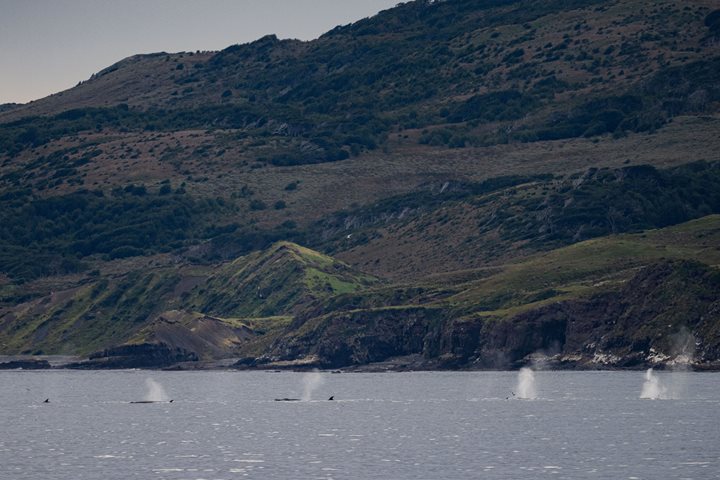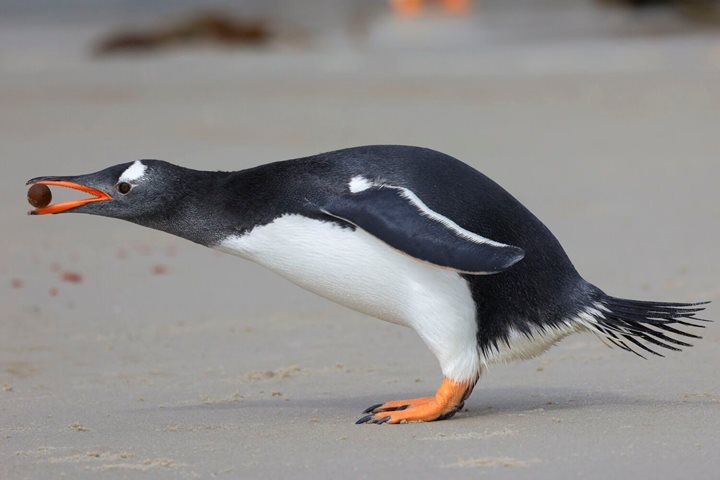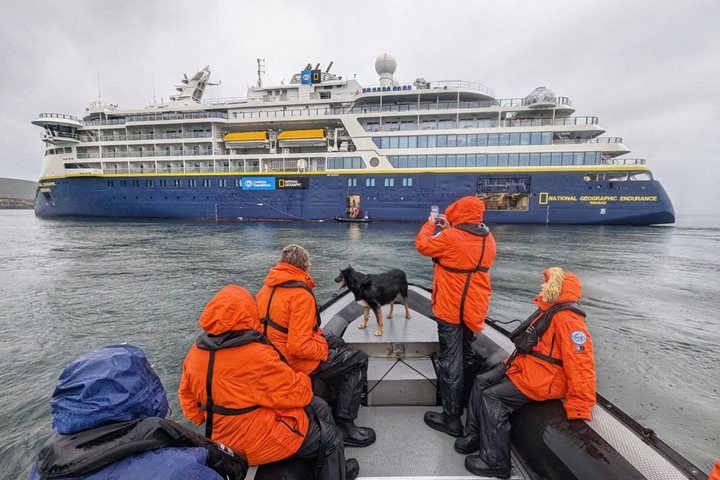After nearly three weeks aboard National Geographic Orion, nearly everyone onboard has grown substantial sea legs. We have been lucky enough to get the weather when we needed it (two landings at Elephant Island is proof of that) and avoid the worst the Southern Ocean has to offer. With each open water crossing we’ve made, the seas have gradually gotten larger and winds stronger. As we start to round the tip of Tierra del Fuego, it’s clear that we’ve fared very well. This last leg from the West Falklands back to Argentina via the South Atlantic was the most consistently lumpy, but also very enjoyable. Despite the movement, National Geographic Orion is plying through the waves headlong with great efficiency. Her sharply pointed and flared bow crashes into the larger sets, sending a spray of water down her flanks. Photographers were still eagerly snapping their final shots of this incredible scene from the dry, sheltered Outdoor Cafe. Being over the shallow, productive continental shelf nearly the whole crossing has afforded us incredible looks at sea birds who are most at home when the wind is up. Whipped by the wind they soar dynamically amidst the surf and spray. Black-browed and wandering albatross drag delicate wing tips over the wave faces as they bank and swirl amidst a watery obstacle course.
Ushuaia is very close now and the Beagle Channel calls to us with promises of a quiet night and a stationary bed. Between the sun, the beautiful yet angry sea, and presentations, I don’t know how anyone is going to find time to pack. While we busy ourselves with the final touches of a trip-of-a-lifetime, others are busily working behind the scenes to ensure that our final evening is just as memorable as the first, lest we forget some of the hardest working people on the ship. Even when the seas are up and ship is moving, they must persevere through very challenging conditions and strive to provide top-notch service no matter how rough it gets.







